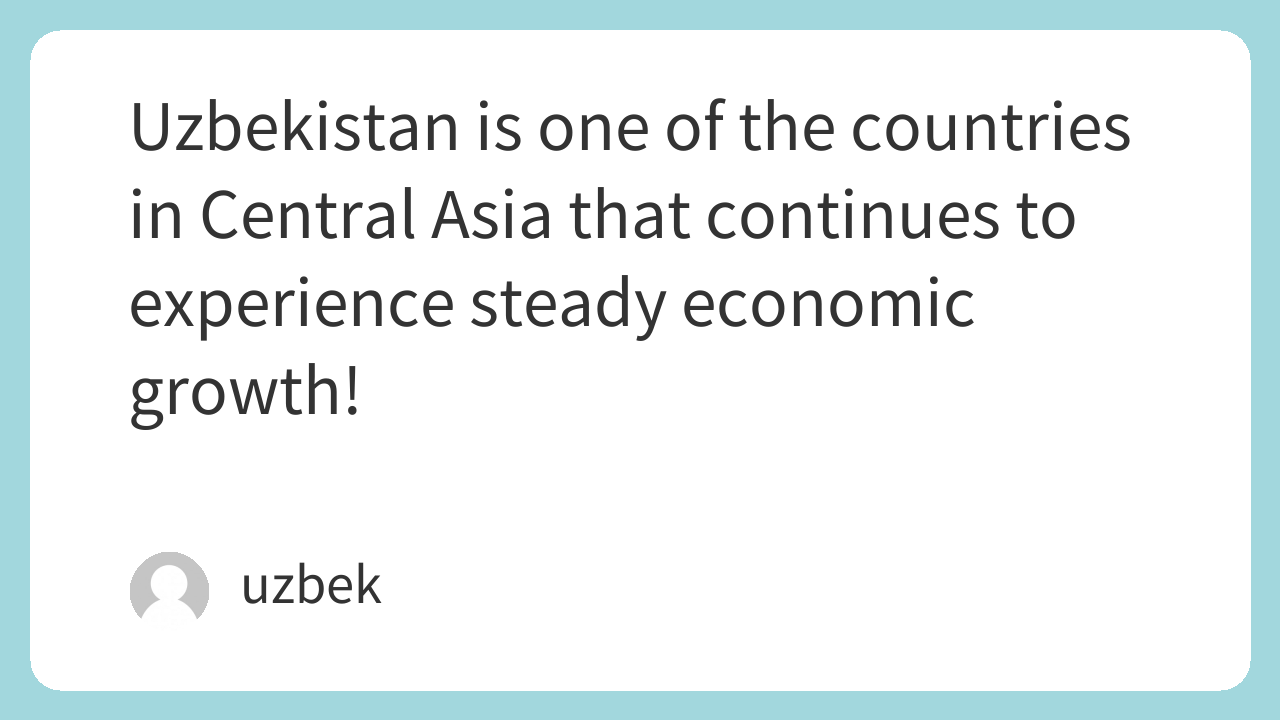Below is a table summarizing forecasts for key economic indicators, based on key international organizations and government targets.
| Economic indicators | Recent Performance (2023-2024) | Short-term forecast (2025-2027) | Mid- to long-term goals and outlook (until around 2030) | Sources of information and evidence |
|---|---|---|---|---|
| Real GDP growth rate | 6.3% (2023) → 6.5% (2024) | Approximately 5.5% – 5.9% (2025-2027) | Aiming for continued average annual growth of 6% to 7% | Government economic reform program, increased investment and industrial diversification efforts |
| Nominal GDP scale | Approximately US$115 billion (2024) | – | US$200 billion (target for 2030) | GDP Doubling Plan |
| Foreign direct investment (FDI) | – | – | Target to raise it to 30% of GDP | Efforts to improve the investment environment (simplification of administrative procedures, strengthening of investor protection, etc.), plans for the privatization of large-scale state-owned enterprises |
| Key growth areas | – | – | Renewable energy , digital economy , high-value-added manufacturing , tourism | Government development strategies by priority sector (see below) |
| Inflation rate | 12.3% (2022) | – | Stabilization target (numerical target not detailed in search results) | Monetary tightening policy, etc. (No detailed future forecast figures in search results) |
📈 Key Growth Engines and Government Strategies
Uzbekistan's continued growth is expected to be largely supported by strategic government-led initiatives , including:
- Attracting large-scale investment and revitalizing the private sector :
The government has made increasing foreign direct investment (FDI) a top priority. Specifically, it is promoting improvements to the business environment by speeding up administrative procedures and strengthening the legal framework for investor protection. Another important factor in attracting investment is the plan to privatize large state-owned enterprises to improve market efficiency and competitiveness. - Industrial diversification and export expansion :
The country is trying to move away from its traditional dependence on agriculture and resources and is focusing on developing high-value-added manufacturing industries such as textiles, chemicals, metallurgy, and electronics . It has set a goal of tripling exports by 2030 and is supporting investment in these strategic sectors with preferential treatment. - The Great Renewable Energy Transition :
In the energy sector, the country has set an ambitious goal of achieving 54% of its electricity needs through renewable energy sources by 2030. Large-scale solar and wind power generation projects and modernization of the power grid are underway or planned, which will not only strengthen energy security but also serve as growth drivers that will attract significant related investment. - Rapid development of the digital economy :
The government has positioned digitalization at the core of its economic strategy, setting a goal of increasing the digital economy's share of GDP from the current 2.7% to 15% by 2030 , and is strengthening support for the development of digital infrastructure and IT startups. - Significant growth in tourism :
Efforts such as relaxing visa requirements and improving infrastructure have borne fruit, resulting in a rapid increase in the number of tourists. Tourism is growing rapidly as an important industry for earning foreign currency and creating jobs, with the country expected to welcome 1 million foreign tourists in a single month by April 2025, and this trend is expected to continue.
⚠️ Potential risks and challenges
While the outlook is optimistic, the following are risks and challenges that the Uzbek economy may face:
- Inflation pressures : As of 2022, inflation was at a relatively high level of 12.3%. If inflation accelerates again due to economic overheating or external factors (such as rising global energy and food prices), it could lead to a tightening of monetary policy and put pressure on household consumption.
- Regional geopolitical risks : Due to the characteristics of the Central Asian region, it is likely to be affected by the situation in neighboring countries and major powers, as well as changes in international relations.
- Risks of implementing structural reforms : Privatization of state-owned enterprises and large-scale regulatory reforms may create conflicts with vested interests and social unrest during the implementation process. The balance between speed and stability of reforms will be crucial.
- Dependence on external economic conditions : A slowdown in the global economy and the economic situation in major trading partners (China, Russia, etc.) could have an indirect impact on the Uzbek economy, as they affect exports, investment, remittances, etc.
💎 Summary
Over the next decade, Uzbekistan's economy is likely to maintain a medium-to-high growth trajectory, supported by the government's large-scale reforms and investment plans . In particular, renewable energy, the upgrading of manufacturing, digitalization, and tourism are expected to be major growth engines.
However, this outlook also depends on managing the challenges of containing inflation , adapting to a changing international environment , and implementing planned structural reforms .
Disclaimer : This article is for informational purposes only and is not intended to constitute investment advice. Economic forecasts are subject to uncertainty and actual results may vary depending on various factors. Before making any significant decisions, we recommend gathering the latest information and seeking professional advice, if necessary.




コメント